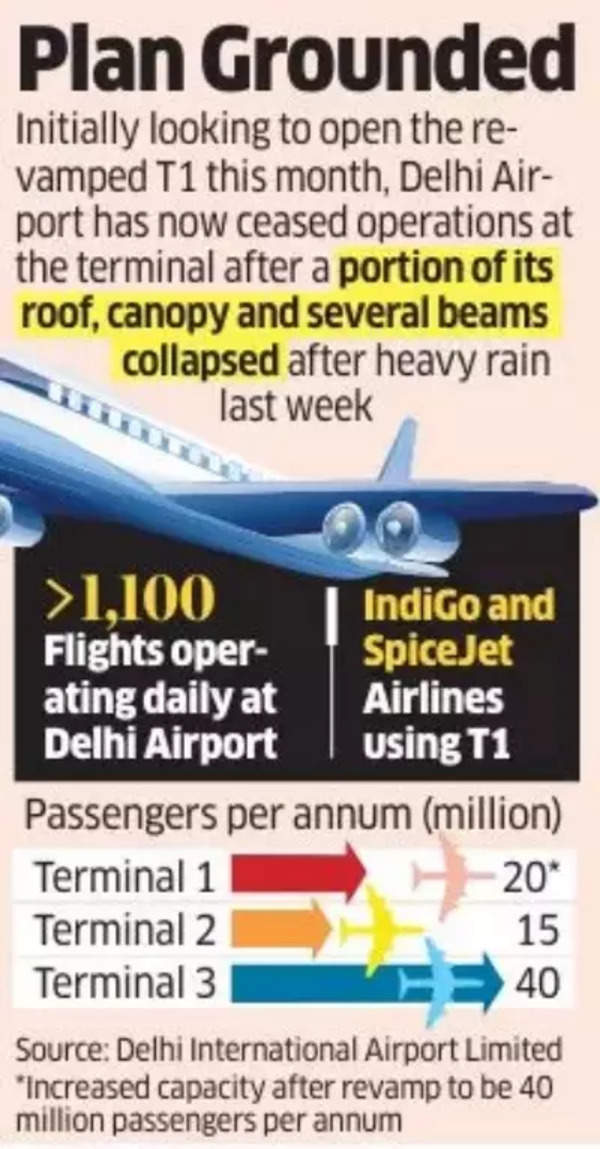Delhi Airport Terminal 1 Update: Operations Delayed Due to Roof Collapse
The commencement of operations at the revamped Terminal 1 of Delhi Airport, the busiest in the country, is expected to be delayed by more than a month. This setback comes after heavy rainfall last Friday caused a roof collapse at the old terminal, resulting in one fatality.
Initially, Delhi Airport had planned to begin operations at the new terminal by mid-July. However, permission will now be granted only after a comprehensive examination of the structure is completed, which is likely to take over a month, sources told ET. An official, who requested anonymity, said, “In the meantime, all flights have been accommodated at terminals 2 and 3.”
A spokesperson from Delhi Airport assured that no flights have been delayed or cancelled, and a cross-functional team is actively assessing the situation and collaborating with various stakeholders to prioritize passenger safety and convenience.

The recently completed expansion project aims to increase the airport’s capacity to approximately 100 million passengers per annum. The project involved integrating the existing structure of Terminal 1 into a new terminal that would double its capacity to 40 million passengers per annum.
As the smallest terminal at Delhi Airport, Terminal 2 was scheduled to reopen once the new terminal became operational. Currently, a team from an Indian Institute of Technology (IIT) is investigating the probable cause of Friday’s incident, during which a portion of the roof, canopy, and several beams at the terminal collapsed due to heavy rain.
Impact on Flights and Passengers
72 IndiGo flights have been relocated from Terminal 1, with nearly half of them moving to Terminal 2. Although T2 has the capacity to handle around 1,400 passengers per hour, the influx of new flights has congested the terminal, according to airline officials.
The officials compared the current situation at the airport to that experienced during winter fog, when the number of passengers to be handled at any given time exceeds the original plan. Prior to Friday’s accident, the airport had already initiated the process of shifting flight operations from T1.
To manage the surge in passengers, additional manpower and X-ray machines have been deployed, and airlines have been requested to reschedule flights to non-peak hours. Delhi Airport has four peak hour windows: 8-9 am, 1-2 pm, 4-5 pm, and 8-9 pm.
Actions Taken
The Central Industrial Security Force, Bureau of Civil Aviation Security, and Directorate General of Civil Aviation officials met with Civil aviation minister Kinjarapu Rammohan Naidu on Sunday to address the issue of increased passenger flow.
An airline executive mentioned that some flights might need to be canceled to reduce the load, and there is a severe impact on on-time performance of airlines. Akasa Air, operating from Terminal 2, has advised passengers to arrive at the airport at least three hours before their scheduled departure to allow extra time for check-in and security checks.








